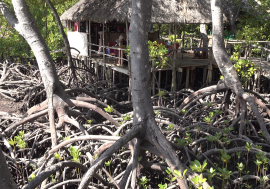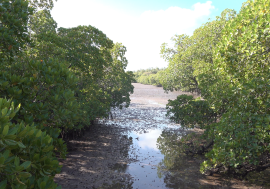African countries could leverage their vast renewable energy resources, tropical forests, peatlands, and marine ecosystems to export premium carbon credits, providing a new revenue stream, according to the 2024 Economic Report on Africa by the United Nations Economic Commission for Africa (UNECA).
The report says, carbon markets could support Africa’s goals of resilience and prosperity, in line with Agenda 2063. They also present a potential path for achieving the Paris Agreement’s climate goals.
“A failure, however, to ensure credit additionality, appropriate governance, and high enough prices could lead to perverse market incentives that increase carbon emissions and slow the climate transition on the continent,” says the report, launched at the recently concluded 10th Africa Regional Forum on Sustainable Development (ARFSD-10) in Addis Ababa, Ethiopia.
Nassim Oulmane, Acting Director of ECA's Technology Climate Change, and Natural Resource Management Division explains that there are two types of carbon markets that Africa could invest in: the regulatory compliance market and the voluntary carbon market (VCM).
But so far, credits from the VCM, where many African countries participate, have been only a small fraction of those supplied by the overall regulatory compliance market.
“In the VCM, the trade of carbon credits is voluntary while the compliance market, is used by companies and governments required by law to account for their greenhouse gas emissions. It is regulated by mandatory national, regional, or international carbon reduction regimes,” he explained.
“Most of the credits in the VCM have come from nature-based solutions, including forest conservation, improved agricultural cultivation, and reforestation. Energy savings from fuel efficiency and fuel switching were additional sources.”
The report shows that in 2022, while the VCM value was approaching a mere $2 billion, the value of traded carbon permits in global markets reached a record $909 billion.
On a more positive note, estimates point to the VCM reaching $10–$40 billion by 2030. A third of the VCM’s traded volume were retiring credits (that is, buying credits to count towards a commitment), but Africa contributed only 11% of this type of VCM credits in 2016.
“Africa currently realizes only around 2% of its annual potential of carbon credits,” says the report.
Explaining Africa’s potential in carbon-credits, Mr. Oulmane said the continent should invest in its untapped renewable energy potential; youthful, rapidly growing workforce; available land and other natural assets; and low emissions.
“Proceeds from sales of carbon credits can provide additional revenue for climate-smart interventions,” said Mr. Oulmane.
He added: “In addition to improving the climate, many of these interventions improve livelihoods, create jobs, spur new economic and sustainable industrial activity.”
The African Carbon Market Initiative (ACMI) estimates that 110–190 million African jobs can be created by 2050 if the carbon price per tonne reaches $80 and direct and indirect jobs are added beyond nature-based solutions.
Evolving carbon markets also present challenges for African economies.
Investing in sustainability transition
While the report shows that Cameroon, DRC, Ethiopia, Ghana, Kenya, Nigeria, Tanzania, Uganda, Zambia, and many other African countries have participated in the VCM, five countries were selected for case studies on investing in a sustainability transition: Gabon, Kenya, South Africa, Senegal, and Morocco.
Each case study reviews the national policy and strategic context and looks at the investment intervention in a sector important for promoting the transition.
GABON: Investing in sustainable forest management
Through investment in sustainable forest management, Gabon has been able to increase employment opportunities, driven by the increase in wood-processing industries in the Gabon Special Economic Zone in Nkok, from 80 in 2009 to 155 in 2018; minimized its deforestation rate; improved its social welfare with poverty incidence estimated at 33.4% and unemployment estimated at 28.8%.
KENYA: Investing in Geothermal energy
Geothermal energy development helped lift Kenya’s GDP from $70.0 billion in 2015 to $113.4 billion in 2023 and reduced its carbon footprint from power generation by displacing some traditional fossil fuel–based power generation.
SOUTH AFRICA: Investing in Renewal Energy
A pioneering model for sustainable financing, the Renewable Energy Independent Power Producer Procurement Programme (REIPPPP) with a competitive bidding process employed ensures market-driven prices, fostering cost reductions in energy production. This not only contributes to the country’s energy security but also enhances its economic competitiveness on the global stage.
SENEGAL: Investing for Green Growth
The investment in renewable energy model expanding renewable energy infrastructure has given access to millions of Senegalese to affordable electricity, fostering growth, sustainability, and resilience in the beneficiary communities. The low tariff of less than EUR 0.04 per kilowatt-hour has improved the purchasing power of the population and stimulated job creation.
MOROCCO: Sustainable finance for an ecological transition
Morocco’s development and implementation of the different financing mechanisms under the Low Carbon Strategy - Green innovation of Agadir municipality and - Positive impact bond -has created new job opportunities and stimulated economic growth in related sectors. Climate investments in energy-efficiency measures are leading to cost savings for businesses and households, contributing to economic productivity and competitiveness.



















